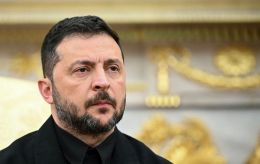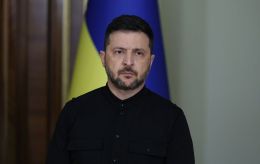Seven kilometers on foot under drones and artillery: How Ukraine searches for the fallen on the frontline
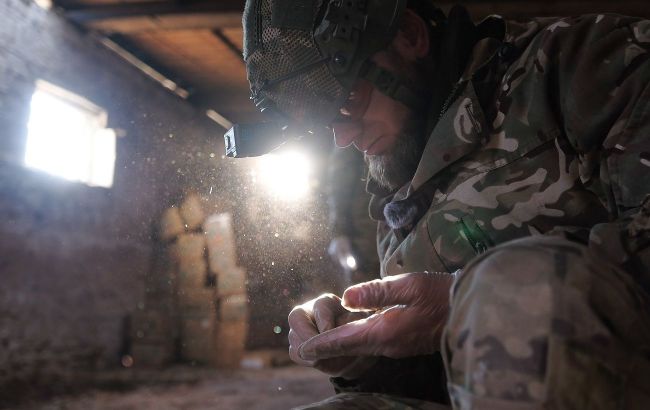 The search for bodies of those killed at the front is carried out by the Platsdarm group (photo: Vitalii Nosach/RBC-Ukraine)
The search for bodies of those killed at the front is carried out by the Platsdarm group (photo: Vitalii Nosach/RBC-Ukraine)
They go in under shelling, mines, and drones to bring home those who will never return alive. The Platsdarm search group carries out one of the largest humanitarian missions of the war: they find and retrieve the bodies of fallen soldiers from the battlefield. Read more below in RBC-Ukraine’s report.
'I couldn’t imagine what it was like there.' How the Platsdarm mission works
For nearly 11 years, thousands of the dead have remained in Ukraine in hostilities along the line of contact and in occupied territories — both soldiers and civilians, including bodies of the Russian army. Platsdarm is the organization that was the first in Ukraine to begin searching for the dead 11 years ago.
“It was May 2, 2014. The first Ukrainian soldiers who were killed near Sloviansk, in helicopters. Two helicopters were shot down by militants, five people died. One was captured. And it was these five that we retrieved,” recalls mission member Oleksii.
At that time, the searcher met Vadym Sukharevskyi, who led the operation to search for bodies as well as anyone who might have survived. They worked together in the village of Karpivka.
“For me, it was the first encounter with war in real life. I couldn’t imagine what it was like there. People were tearing that helicopter apart with axes and crowbars for scrap metal. Fragments of bodies lay around. No one paid attention. It felt like there were no people there at all. Brutality, looting,” the searcher says.
The work of Platsdarm is not a military operation but a humanitarian mission. The searchers go where even evacuation groups often cannot reach. At their own risk, the men head into the battlefield under drone and artillery strikes. But each year, carrying out their mission is becoming much more difficult.
“You know, if you look at a 100% scale, it has become about 90% harder. We have a 10% chance of retrieving a fallen soldier from the battlefield. That’s very little. Essentially, out of a hundred people, you can retrieve ten, or not retrieve any. Sometimes an operation lasts several days,” Oleksii says.
Because of the intensity of the fighting, there are situations when, even after a long journey, it’s impossible to reach the dead and take them off the battlefield. The Russians spare no one, even though the team isn’t fighting. Every operation is planned in advance and includes many factors.
“You can’t imagine how many logistical steps are needed just to retrieve one body. At least two people have to go in. And when you walk seven kilometers on foot, under drones, under artillery, through mined fields. And you don’t know if you’ll make it — and then you still have to come back with the body,” he explains.
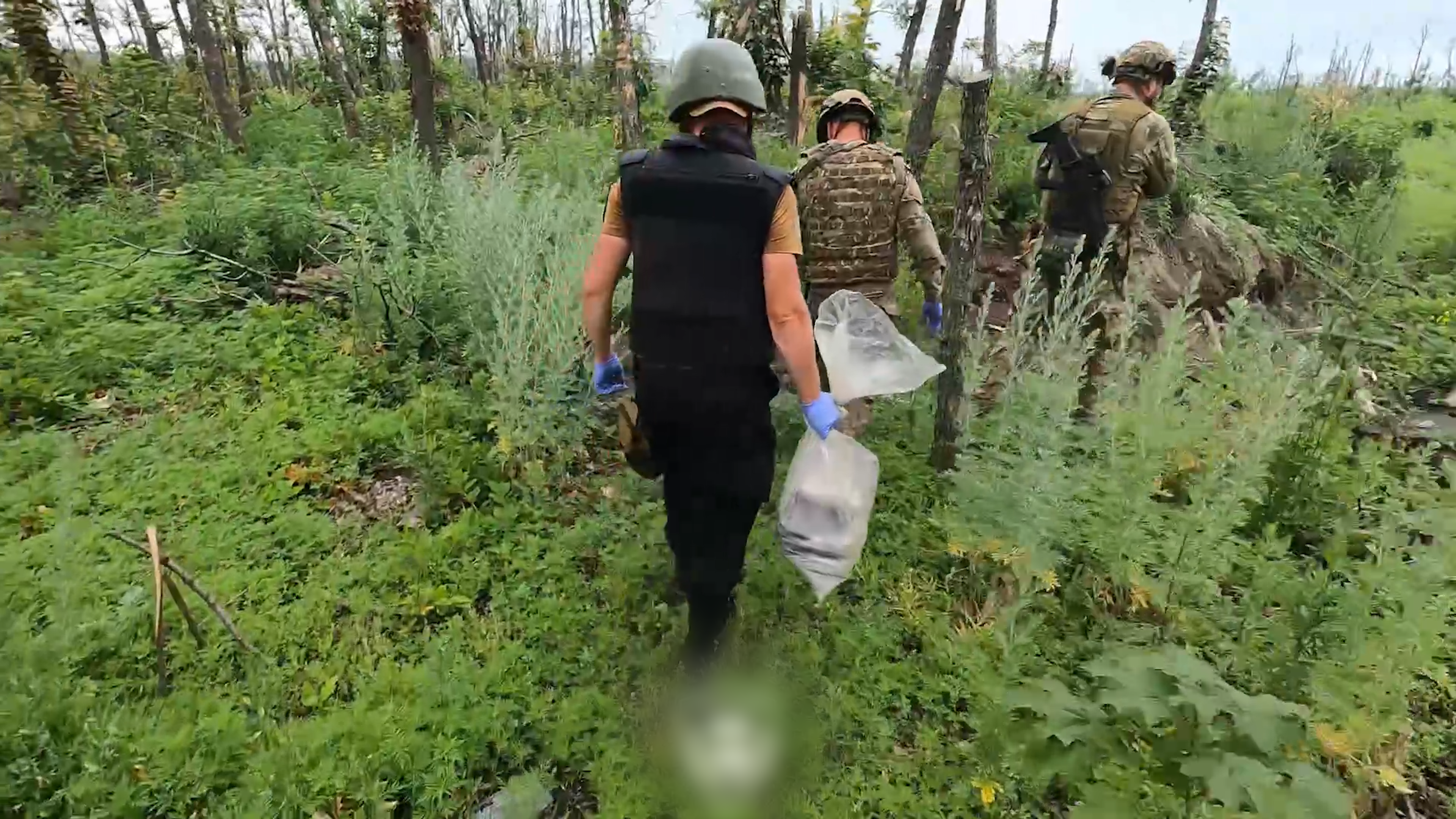 Members of the Platsdarm group often have to walk many kilometers under fire (photo: Vitalii Nosach/RBC-Ukraine)
Members of the Platsdarm group often have to walk many kilometers under fire (photo: Vitalii Nosach/RBC-Ukraine)
'One armored robot survives only 2-3 operations.' How robotic complexes are used
The team has to go to infantry positions where vehicles can’t enter. Fortunately, modern technologies help. The men raised money for an unmanned ground vehicle (UGV) and can sometimes perform the work remotely. But many more such robotic complexes are needed.
“One UGV survives only 2–3 operations. Last time we pulled out two guys near Pokrovsk. We created a logistical route. One path in, another out. Because if they notice it, they can mine the road or send a drone,” says Oleksii.
Still, most operations the men carry out themselves. They head to the contact line, camouflaging themselves in tree lines, waiting out danger, and moving on. They admit the work is extremely hard.
“You throw it over your shoulder and pull, you already want to cry, you have no strength left because you’re carrying 35 kilograms of metal. And you keep pulling, and you lower the bag but never let go. And you think, no, I can’t leave them. You pull, fall, get up, and drag,” Oleksiy says.
The team consists of six men who all work together. Sometimes all six pull two bodies, since they can weigh around 100 kilograms. They try to retrieve everyone, although they understand that at any moment they themselves could be killed.
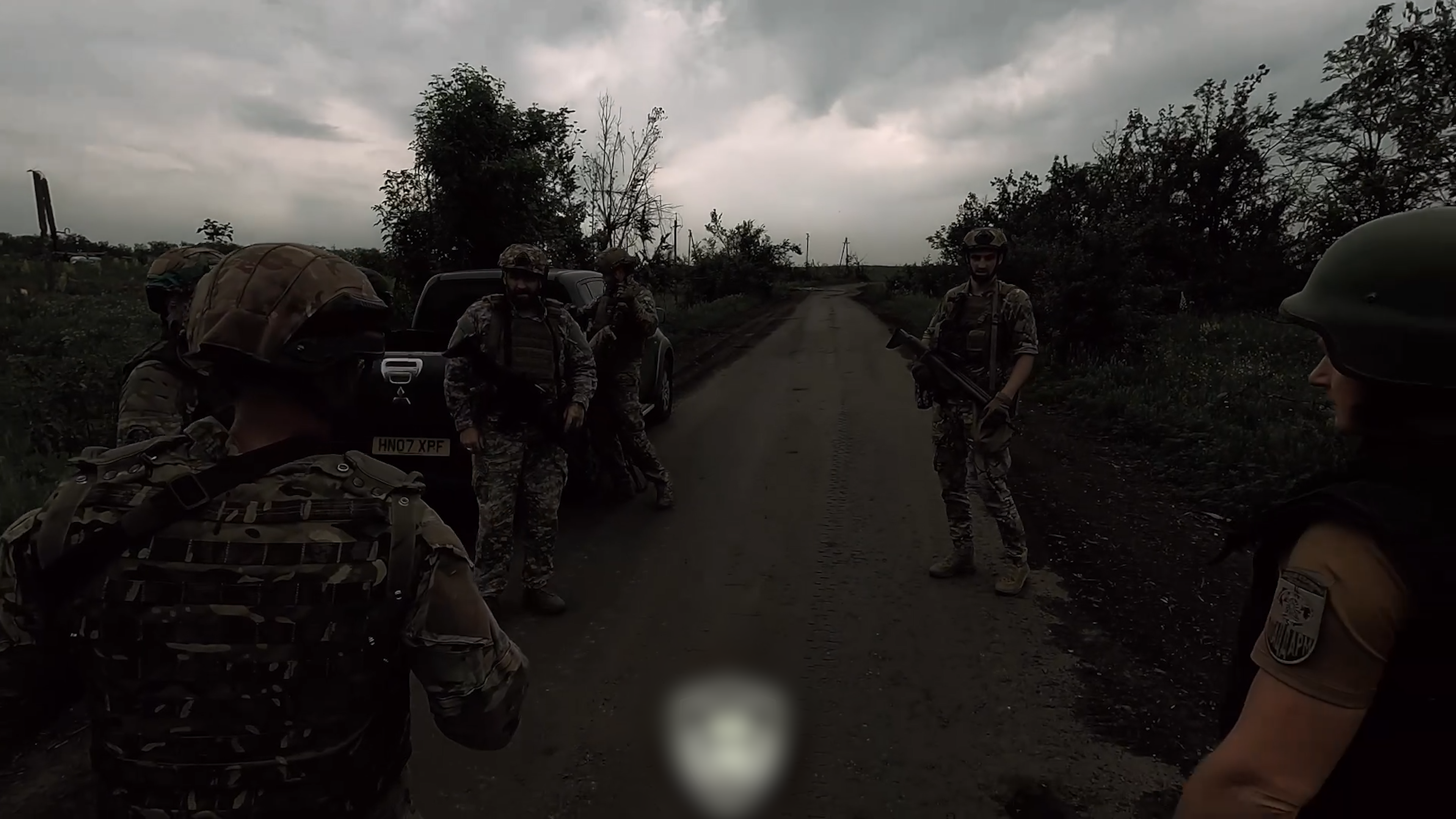 The group was the first in Ukraine to start searching for the dead back in 2014 (photo: Vitalii Nosach/RBC-Ukraine)
The group was the first in Ukraine to start searching for the dead back in 2014 (photo: Vitalii Nosach/RBC-Ukraine)
How information about the recovered bodies is documented
We arrived in the Donetsk region to meet the search team. A truck was parked near an abandoned building, with the sign “200” in the corner. Even from the closed vehicle, a heavy smell began to spread. Death has a terrible smell. You cannot confuse it with anything; it cannot be forgotten.
The men unload the body bags one by one and bring them inside. Each person retrieved from the battlefield will be identified there. The searchers open the bag and carefully place the body on a metal table. Oleksii begins his work.
“At the moment, we’re examining a body that was found during search operations in the Bakhmut direction. This is the body of a Russian serviceman based on the equipment. Now we’ll examine for personal identification marks and documents,” he says.
Oleksii carefully lays out the skeletal remains according to anatomical structure. He removes a half-broken helmet and takes items from the pockets. He comments on every item and every injury, and another soldier writes everything down. Each item may later become very important for identification. Everything is also documented in photos.
After the detailed examination, the searchers take out the next body. This is also a dead Russian soldier. He apparently died not long ago. Oleksii notes a broken upper jaw and a large tattoo on the back.
“This is very important additional information for establishing the person’s identity. Thanks to it, the person can essentially be identified even without DNA sampling. Relatives can recognize him by the tattoos, and the person will be buried in his homeland,” Oleksii explains.

Information about the bodies found is documented, and all personal belongings of the deceased are recorded (photo: Vitalii Nosach/RBC-Ukraine)
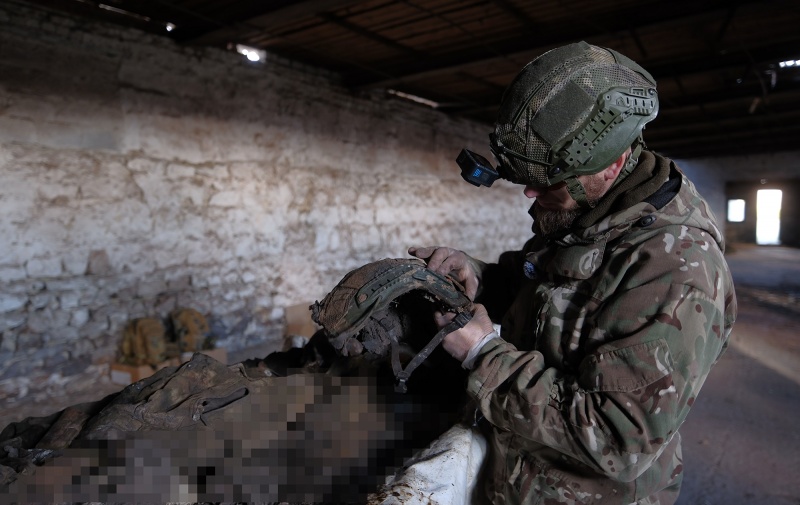
Information about the bodies found is documented, and all personal belongings of the deceased are recorded (photo: Vitalii Nosach/RBC-Ukraine)

Information about the bodies found is documented, and all personal belongings of the deceased are recorded (photo: Vitalii Nosach/RBC-Ukraine)
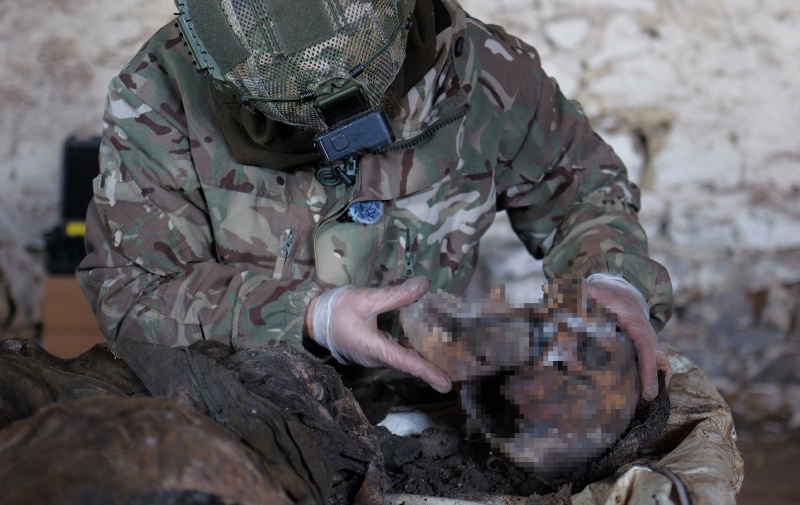
Information about the bodies found is documented, and all personal belongings of the deceased are recorded (photo: Vitalii Nosach/RBC-Ukraine)
.jpg)
Information about the bodies found is documented, and all personal belongings of the deceased are recorded (photo: Vitalii Nosach/RBC-Ukraine)
This body and many others were found at positions held by the Russian army. The team retrieved all bodies and remains. Ukrainian soldiers were immediately transferred to their units. Unknown bodies and Russians were taken for detailed examination.
Unfortunately, due to heavy fighting, sometimes almost nothing remains of the dead, making identification much more difficult. But even small details can help. Oleksii takes out a bag with tiny fragments of bone that were found in a burnt-out tank.
The team assembles the anatomical fragments of the human bones — essentially everything left after the explosion in the tank. The searcher lays out each piece on an anatomical banner and determines possible parts of the skeleton.
“These are fragmented remains, completely burned. Unfortunately, they have no biological material for DNA sampling because the bones were burned,” Oleksii says.
Even though the fragments cannot be identified by DNA, information about which tank the remains were found in may later help determine the person.
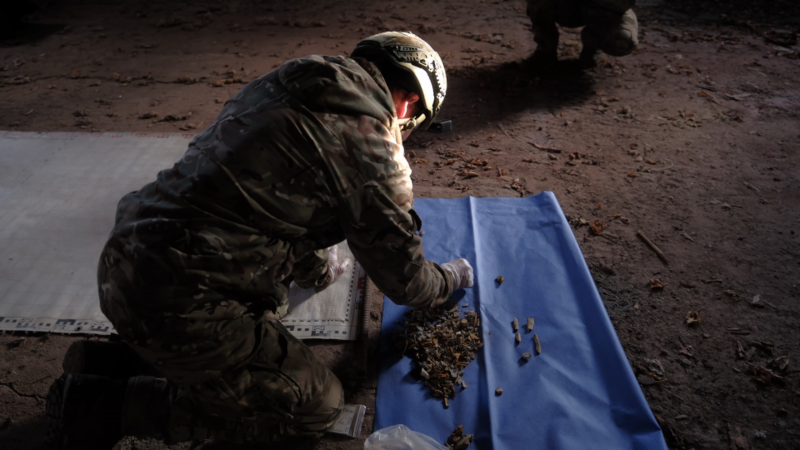
Even minor details can help identify bodies (photo: Vitalii Nosach/RBC-Ukraine)
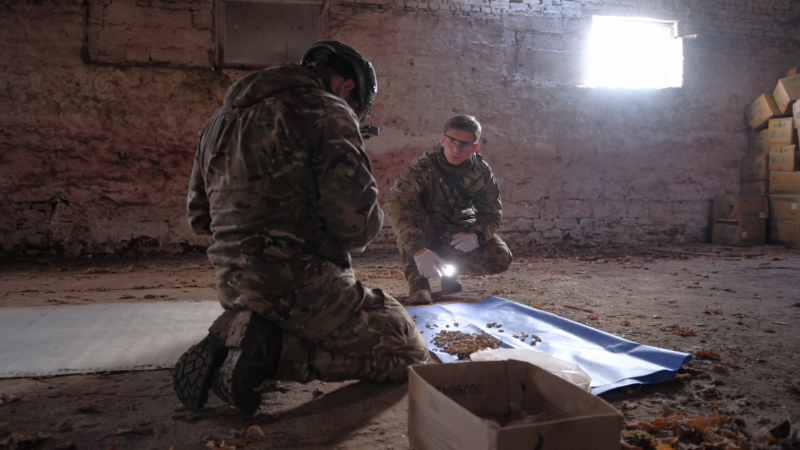
Even minor details can help identify bodies (photo: Vitalii Nosach/RBC-Ukraine)

Even minor details can help identify bodies (photo: Vitalii Nosach/RBC-Ukraine)
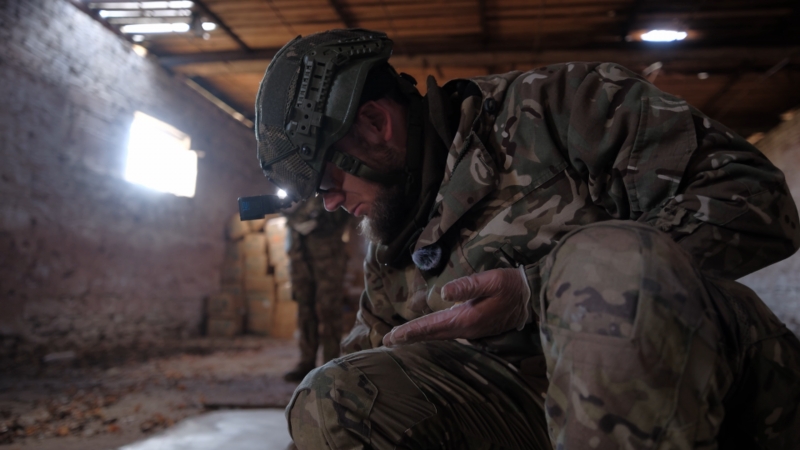
Even minor details can help identify bodies (photo: Vitalii Nosach/RBC-Ukraine)
Families asked to bring a bit of soil from Ilovaisk
Because of the intensity of fighting and the shifting front line, the bodies of fallen Ukrainian soldiers remain on the frontline. Thousands of families live in uncertainty, unable to bury their loved ones.
“You know, when you imagine the ‘shirt’ of a fallen or missing person on yourself or your family, you understand how important it is. That every soul must be brought peace, must be returned. That every family should know where to go to their loved one to say their last words. How important it is to have a place to come,” Oleksii says.
Mothers often reach out to the searcher, still unable to bury their children. They envy those who at least have a grave to come.
“Back in 2014, they told me: ‘Oleksii, can you just bring some soil from Ilovaisk? My child died there. I want at least some soil, so there’s a place to go.’ It’s so important to remain human and feel the pain of others,” the soldier recalls.
The search unit retrieves bodies of both Ukrainians and Russians from the battlefield. This is an exchange fund and a way to bring Ukrainian soldiers home. It is also important for Russians to understand the consequences of the war.
“It’s important to me that Russians return home, so their parents and loved ones also understand what pain is, what grief is. What it’s like to lose someone you’ll never see again. You won’t hear their voice, feel their warmth,” the unit commander says.
Oleksii explains that it is very important that everyone who came here with a weapon is buried at home, not left on Ukrainian land. So that Russians see how many dead this war has brought.
“World War II showed that if we don’t remember the price of war and the number of victims, then soon there will be another war. And it came,” he says.
 "Back in 2014, they told me: ‘Oleksii, can you just bring some soil from Ilovaisk? My child died there,” the soldier recalls (photo: Vitalii Nosach/RBC-Ukraine)
"Back in 2014, they told me: ‘Oleksii, can you just bring some soil from Ilovaisk? My child died there,” the soldier recalls (photo: Vitalii Nosach/RBC-Ukraine)
'All for the soul to find peace'
Over the years of search work, Oleksii has had to find people he knew in life. They were friends and even two searchers from the unit. In 2022, a searcher was killed by a mine; he could not be saved.
“We had to retrieve children, women, elderly people, soldiers, and Russians. And it seems like I’ve seen everything, but when certain moments happen, you realize you won’t have enough life to find even a part of the people from this war who were killed. And this is not the end of this war. The numbers have already reached millions,” Oleksii says.
Families often write to the men after they manage to bring their loved ones home. They sincerely thank them. This gives the team strength and motivation to continue their extremely difficult mission.
“Searching is not only for the dead — it’s also for the living. For all of us. To feel like a human being, to know you did everything to bring him back. All for the soul to find peace,” he explains.
Oleksii says that often it feels like even the souls of the dead help them when they find themselves in dangerous situations, but manage to survive.
“For us, it’s a sign that there are higher powers that protect us. They protect us so that we can fulfill our mission on this earth,” Oleksii concludes.
